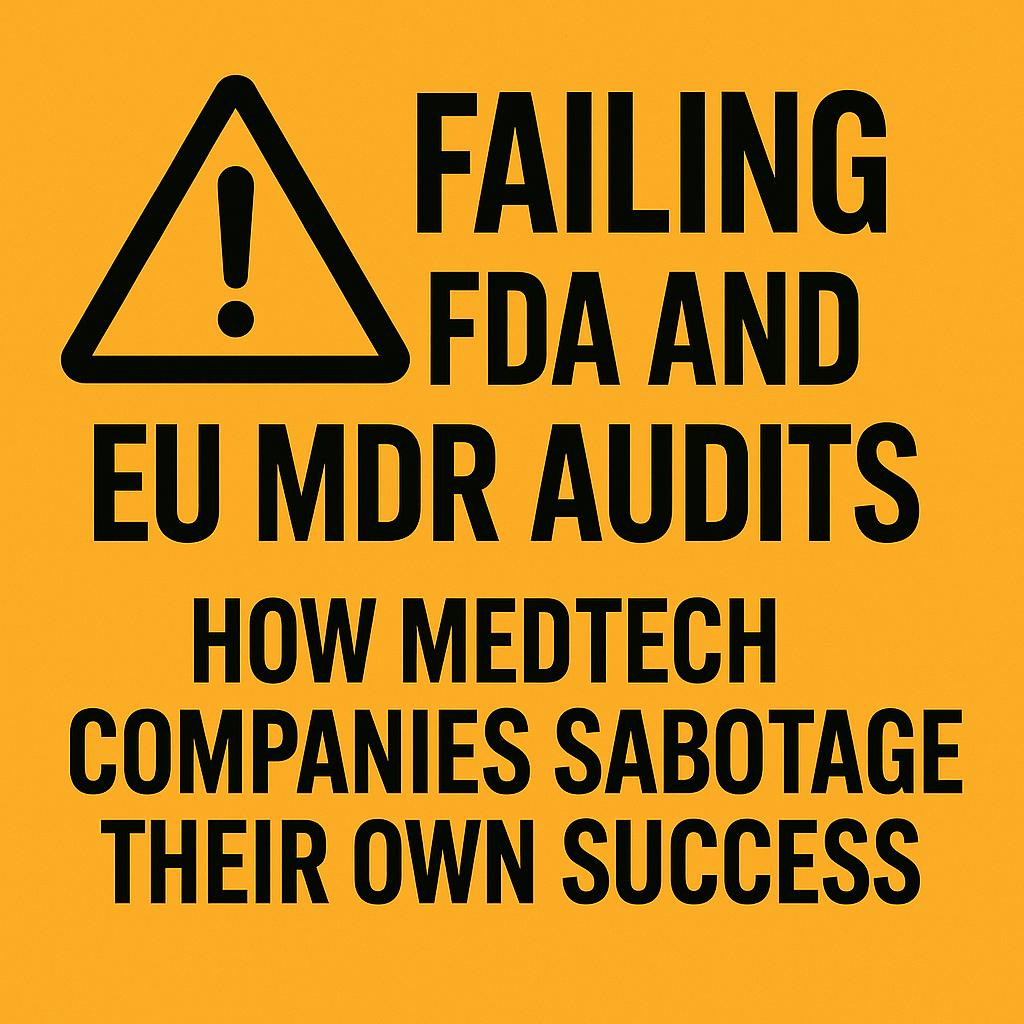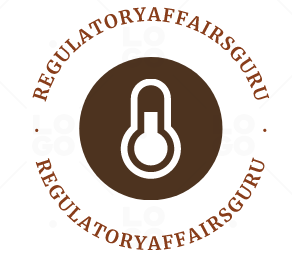
Introduction: Why FDA and EU MDR Audit Readiness is Important
Medical device companies must prepare for FDA inspection and EU MDR audit to keep the market open, ensure patient safety, and ensure business continuity.
✅ Your FDA unannounced inspection can be extended to your compliance with Quality System Regulation (QSR) as per 21 CFR Part 820.
✅ EU MDR notified body audits to review your QMS, technical file, and PMS for EU MDR 2017/745 compliance.
Audit failure may result in:
❌ Form 483 observations and warning letters.
❌ Import hold, shipment block, and product sequestration.
❌ Loss of CE mark, stop EU sales.
❌ Reputation loss with distributors, hospitals, and investors.
Audit preparation is not a one-time event but a mindset that is part of your company culture, processes, and record systems.
FDA inspections measure your conformity to 21 CFR Part 820 (QSR) with specific focus on:
✅ Controls of design (Class II and III devices).
✅ Document and record controls.
✅ CAPA and complaint procedure management.
✅ Controls of production and process.
✅ Controls of purchasing (supplier control).
✅ Labeling and packaging controls.
✅ Device master records (DMR) and device history records (DHR).
FDA types of inspections:
✅ Pre-Approval Inspections (PAI): Before 510(k)/PMA approval, for facility readiness.
✅ Regular Inspections: Routine for domestically based manufacturers, usually every 2 years.
✅ For-Cause Inspections: Adverse events, recalls, or complaints.
✅ Follow-Up Inspections: For a previous inspection with 483 deficiencies or warning letters.
What is an EU MDR audit?
Your Notified Body performs EU MDR audits and includes:
✅ QMS audits: To ensure your QMS is ISO 13485:2016 and EU MDR compliant.
✅ Technical documentation audits: Auditing your device design, risk management, labeling, IFU, and clinical evidence.
✅ Unannounced audits: EU MDR is required to audit continuous compliance.
EU MDR audits must be performed if you wish to maintain your CE Mark, or else you will not be able to sell in the European market.
???? Step-by-Step Guide: FDA and EU MDR Audit Readiness
1️⃣ Familiarize Yourself with Regulating Rules
✅ For the FDA: Read 21 CFR Part 820 (QSR) cover to cover.
✅ For EU MDR: Read EU MDR 2017/745, ISO 13485:2016, and applicable harmonized standards (e.g., ISO 14971 for risk management).
Tip: Maintain a regulatory reference binder with critical clauses to make internal training easier.
2️⃣ Establish and Maintain an Effective QMS
Your QMS is the foundation of your audit readiness. It must have:
✅ Document control and record-retention procedures.
✅ Risk management is incorporated in the post-market and design process.
✅ CAPA and complaint procedures are defined explicitly.
✅ Supplier qualification and monitoring process.
✅ PMS and vigilance processes are to be monitored continuously.
Tip: Regular internal audits are required to maintain QMS, FDA, and EU MDR compliance.
3️⃣ Documentation Structure and Update
Audit readiness by easily accessible, complete, and well-documented records, such as
✅ Device Master Record (DMR) and Device History Records (DHR).
✅ Design History File (DHF) with sufficient traceability to user requirements and verification/validation.
✅ ISO 14971-based risk management documents.
✅ Training records for critical process staff.
✅ CAPA records such as root cause analysis captured and effectiveness verifications.
✅ Complaint records and MDR/Vigilance reports.
✅ PMS and PSUR (if EU MDR).
Tip: Test document readiness by having on-time simulation retrieval in case of an audit.
4️⃣ Audit Readiness Staff Training
✅ Have mock audits with your personnel using real-case examples.
✅ Train personnel on:
Asking inspectors questions professionally.
Their area of responsibility.
They do not give educated estimates but refer to responsible individuals.
✅ Appoint an audit coordinator to offer logistics and communications during auditing.
Tip: Give “auditor etiquette” training to be polite and calm.
5️⃣ Get Your Facility Ready
✅ Have equipment maintenance and calibration up to date.
✅ Keep the production, storage, and test facilities as clean and organized as possible.
✅ Label equipment and areas correctly for traceability.
✅ Keep samples and retention products in good condition.
6️⃣ Pass the Audit Successfully
During the audit:
✅ Greet inspectors professionally and offer a workplace where they will not be disturbed.
✅ Offer documents to be reviewed.
✅ Answer questions truthfully and concisely; do not give unnecessary extra information.
✅ Photocopy documents presented to inspectors.
7️⃣ Respond to Findings promptly
If the FDA gives Form 483:
✅ Read observations carefully.
✅ Within 15 business days, provide:
Provide a root cause analysis.
Corrective actions and deadlines.
Provide proof of the necessary corrective actions.
For EU MDR audits:
✅ Document non-conformities on your notified body report promptly, with brief corrective action plans.
8️⃣ Continuous Improvement
Audit readiness goes on.
✅ Review audit findings to identify systemic improvements.
✅ Remediate training, SOPs, and QMS processes where you could not identify weaknesses.
✅ Track corrective actions and take them.
⚠️ Avoidance Traps
❌ Awaiting an audit to complete documentation gaps.
❌ Underestimating corrective action timelines that you cannot achieve.
❌ Pursuing QMS procedures based on real practice.
❌ Failing to have documents at hand when requested.
❌ Employee training is inadequate, leading to inconsistent responses during audits.
???? FDA and EU MDR Audit Readiness Best Practices
✅Conduct regular internal audits to identify any issues before the regulators become involved.
✅ Use electronic QMS systems for document traceability and retrieval times.
✅ Maintain your risk and design files in good order and up to date.
✅Maintain a high level of performance by conducting quarterly audit readiness checklists.
✅ Use cross-functional teams to simulate true audit environments.
✅ Demand quality and compliance culture daily, not just as a readiness exercise for audit drills.
Real-World Example
The FDA audited the medtech wearables start-up after a series of adverse event reports.
✅ Their highly documented QMS allowed them to retrieve DHRs, CAPAs, and risk analyses in minutes.
✅ Staff were instructed to answer questions without flair and to redirect on difficult ones.
✅ Mock in-house audits kept the team relaxed when the real audit arrived.
Result: Zero of the 483 observations impressed the FDA and Series B round due diligence investors greatly.
What to accomplish with Audit Readiness
✅ Gain certain market access to the EU and US without interruption.
✅ Prevent expensive delays through action taken under enforcement.
✅ Enhance your QMS and operational excellence.
✅ Gain the trust of partners, hospitals, and distributors.
✅ Gain investors’ trust by conducting due diligence.
📚 References
1️⃣ FDA QSR (21 CFR Part 820): https://www.ecfr.gov/current/title-21/chapter-I/subchapter-H/part-820
2️⃣ FDA Medical Device Reporting (21 CFR Part 803): https://www.ecfr.gov/current/title-21/chapter-I/subchapter-H/part-803
3️⃣ FDA Inspection Guides: https://www.fda.gov/inspections-compliance-enforcement-and-criminal-investigations/inspection-guides
4️⃣ EU MDR Official Text: https://eur-lex.europa.eu/eli/reg/2017/745/oj
5️⃣ ISO 13485:2016 – QMS: https://www.iso.org/standard/59752.html
6️⃣ ISO 14971:2019 – Risk Management: https://www.iso.org/standard/72704.html
